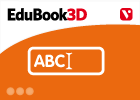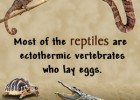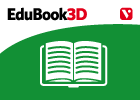Cargando...
Recursos educativos
-
Nivel educativo
-
Competencias
-
Tipología
-
Idioma
-
Tipo de medio
-
Tipo de actividad
-
Destinatarios
-
Tipo de audiencia
-
Creador
Lo más buscado
- Múltiplos de 4
- Guía del mundo
- Himalaya
- Juegos para aprender en bachillerato
- Operaciones de multiplicar
- Otrografía de mp y mb
- Juegos navideños
- Arte mozárabe
- Experimentos P3
- Experimentos de ciencias para segundo
- Tejidos animales
- Experimentos naturales
- Childtopia manualidades
- Civilizaciones de la antigüedad
- Actividades didacticas en quinto
-

Observe. Blood and its components
EduBook Organización
- 1360 visitas
Look at this microscopic view of a drop of blood, and answer these questions. How many different kinds of blood cells can you see in the photo? What shape is each of the blood cells? What is the most…
-

Reflect. Air pollution
EduBook Organización
- 1352 visitas
Read, reflect and discuss. The Effects of Air Pollution on EU Citizens According to data published by the European Commission, air pollution causes 370000 premature deaths per year in the European Union…
-

Final self-evaluation 9.06 - The Plant Kingdom
EduBook Organización
- 1327 visitas
Complete the following sentences with the missing words: The is the part of the seed that grows into a new plant. are the most widespread and common type angiosperm plant. The of angiosperms contain the…
-

Non-governmental organisations (NGOs)
EduBook Organización
- 1271 visitas
6.1. What are NGOs? Non-governmental organisations (NGOs) are entities with humanitarian and social aims. They are independent of governments, states and political parties. They tend to be formed by…
-

Treaties and supranational organisations
EduBook Organización
- 1269 visitas
5.1. Relations between states States are in constant contact with each other as they develop. They have many common problems and to resolve them, they need to work together. To do this: They sign…
-

Characteristics of Reptiles Explained with Pictures
V&V Books Vicens Vives Organización
- 1 lo usan
- 1071 visitas
What is common between snakes and turtles? How are they related to lizards and crocodiles? In fact, all these animals are classified as reptiles. Though they do not look similar, there are some basic…
-

Speaking: pets (T: Grade 2)
EduBook Organización
- 842 visitas
Robinson Crusoe had a parrot on the island and he taught the parrot how to speak. Look at the photos of animals below. Do people keep these animals as pets in your country? Which is the most/least…
-

Speaking – rules and regulations (T: Grade 6)
EduBook Organización
- 841 visitas
How old must you be before you can vote in your country? Are there any regulations about what people can wear in your country? Do drivers usually obey the traffic regulations where you live? What is the…
-

Asexual reproduction in plants
EduBook Organización
- 5580 visitas
2.1. Types of asexual reproduction Asexual reproduction is common in plants. New plants are mainly produced from stems, leaves or roots. The new plants are identical to the originals. This is because…
-

Asexual reproduction
EduBook Organización
- 4891 visitas
Most animals reproduce by the sexual union of two individuals. However, some animals can reproduce asexually, without another individual. Part of the body of the animal develops to form a new…
Te estamos redirigiendo a la ficha del libro...











